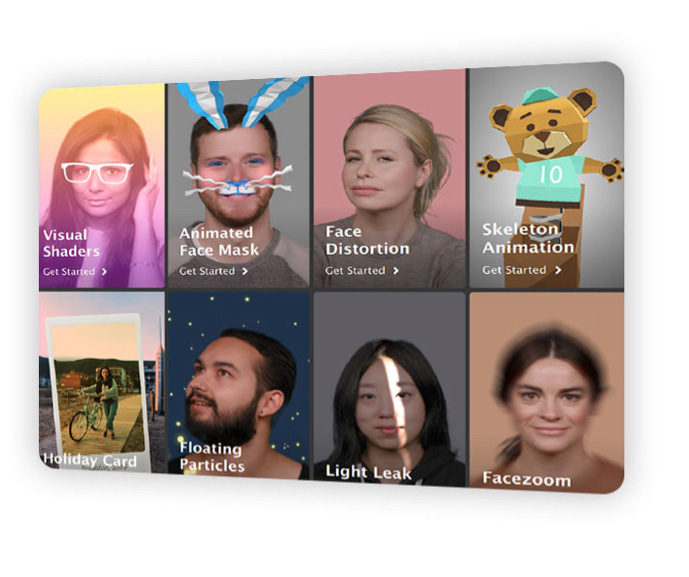
Image Source: Instagram
Facebook has opened its augmented reality (AR) design platform to everyone on Instagram. Spark AR brings augmented reality to cameras in phones, rather than separate devices, such as glasses. It was previously available only to approved creators on Instagram.
With the AR tool, users can create camera-generated custom special effects for Instagram Stories. While surreal filters superimposed over faces are now popular, it seems the tool’s possibilities are limited only by creators’ imaginations.
Influencers and brands likely will quickly embrace the creative tool. It offers a new way for businesses to engage with consumers and promote their products. Brands will probably tap the technical expertise and creativity of independent creators. Creating original AR filters as a brand signature seems a natural application.
People Love Augmented Reality
The Spark AR platform highlights the growing popularity of augmented reality, especially among millennials and Gen Z. It also poses a potential threat to Snapchat, Instagram’s rival which has offered a similar ability through its Lens Studio for more than a year. The availability of AR could further boost Instagram’s popularity and encourage Snapchat influencers to migrate to the Facebook-owned social media network.
Facebook introduced its Camera Effects Platform in 2017, and then renamed it Spark AR last October. Until now, it’s remained under beta testing with a limited group of creators. It proved to be quite popular.
“More than 1 billion people have already used AR effects and filters powered by Spark AR on Facebook, Instagram, Messenger, and Portal, and we can’t wait for even more people to experience all that AR has to offer on Instagram,” states Facebook Product Manager Matt Roberts in Facebook’s blog for developers.
Users can go to the new “Browse Effects” option at the end of the effects tray in the Instagram Camera to try new filters.
A Heap of New Tools
“The option will provide a whole heap of new tools for Instagram users, expanding on the capacity of its visual offerings, without Instagram itself having to rely on its internal designers,” says Andrew Hutchinson at Social Media Today. “And that can have significant benefits.”
Tools like Spark AR and Snapchat’s Lens Studio are more than high-tech playthings.
Some Snapchat creators have earned healthy incomes with Snap’s Lens Studio. About 100 “official lens creators” make custom augmented reality lenses for Snapchat, according to CNN. Some earn tens of thousands of dollars creating sponsored AR lenses for brands, including Nike and Fanta, and selling merchandise such as t-shirts. Official Lens creators on Snapchat charge a minimum of $1,000 for a sponsored lens, while more complex work can cost up to $30,000 per job.
Building more complicated lenses can require technical skills, such as coding, 3D modeling, photo editing and graphic design knowledge, and knowledge of other programs such as Photoshop.
“It’s opened up this whole new career path for a lot of people,” Rhonda Greene, an official lens creator, told CNN. Greene, CTO at a web development firm, earns extra income by creating lenses for brands, such as a high-end bridal shop in Detroit and from a line of clothing and accessories on Shopify.
Bottom Line: Marketers can now take advantage of new augmented reality tools to promote their brands on Instagram. Creativity and technical skills will be key for early adopters. Imagination may be the only constraint.
William J. Comcowich founded and served as CEO of CyberAlert LLC, the predecessor of Glean.info. He is currently serving as Interim CEO and member of the Board of Directors. Glean.info provides customized media monitoring, media measurement and analytics solutions across all types of traditional and social media.




